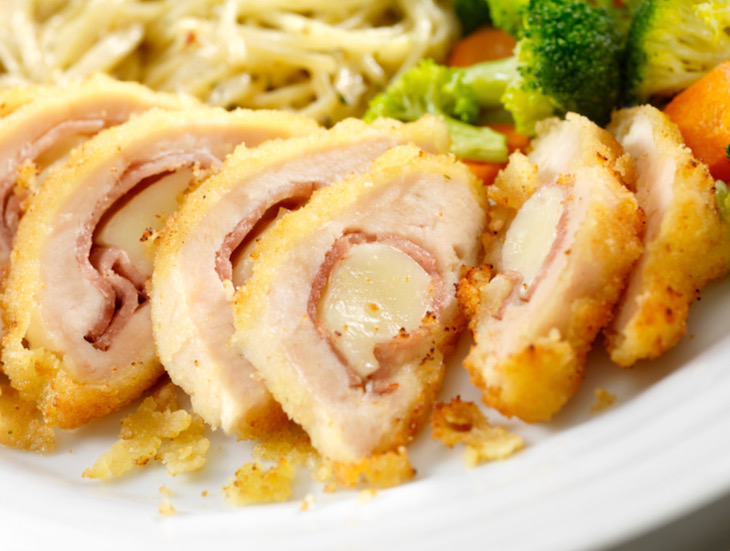The USDA has released their proposal to declare Salmonella an adulterant at “very low levels” in breaded stuffed raw chicken products. The announcement that a proposal was coming was made in August 2022. These types of products have been linked to many food poisoning outbreaks in the past several years.
In fact, since 1998, raw breaded stuffed chicken products have been associated with up to 14 outbreaks and at least 200 illnesses. The last outbreak was in 2021, when 28 people in 8 states were sickened after eating Serenade Foods stuffed chicken products including Kirkwood and Milford Valley brands. This proposal builds on the USDA’s proposed regulatory framework to reduce Salmonella infections linked to poultry products.

Salmonella causes about 1.35 million human illnesses and 26,500 hospitalizations in the United States every year. Of those, more than 23% are attributed to poultry products. The total cost of foodborne Salmonela infections in this country is $4.1 billion annually, and the loss of productivity to the economy is $88,000,000 per year.
Under the proposal to declare Salmonella an adulterant, FSIS would consider any raw breaded stuffed chicken products that tested positive for Salmonella at 1 colony forming unit (CFU) per gram before stuffing and breading adulterated. The proposal also states that FSIS will carry out verification procedures, including sampling and testing the chicken component to ensure that establishments control Salmonella in these products. If the chicken does not meet these standards, the product could not be used to produce the final raw breaded stuffed chicken products, but could be diverted to another use.
These products are pre-browned and may look like they are cooked, but the chicken is raw. Despite warnings on the labels and specific cooking instructions, it can be difficult for consumers to determine what the actual temperature inside the product is because they contain multiple ingredients that can cook at a different rate, even when a food thermometer is used.
And cooking this type of chicken product in the microwave or in an air fryer can leave cold spots in the product so bacteria is not destroyed. In addition, the breading can fall off before the chicken product is cooked, and can contaminate surfaces in the kitchen.




